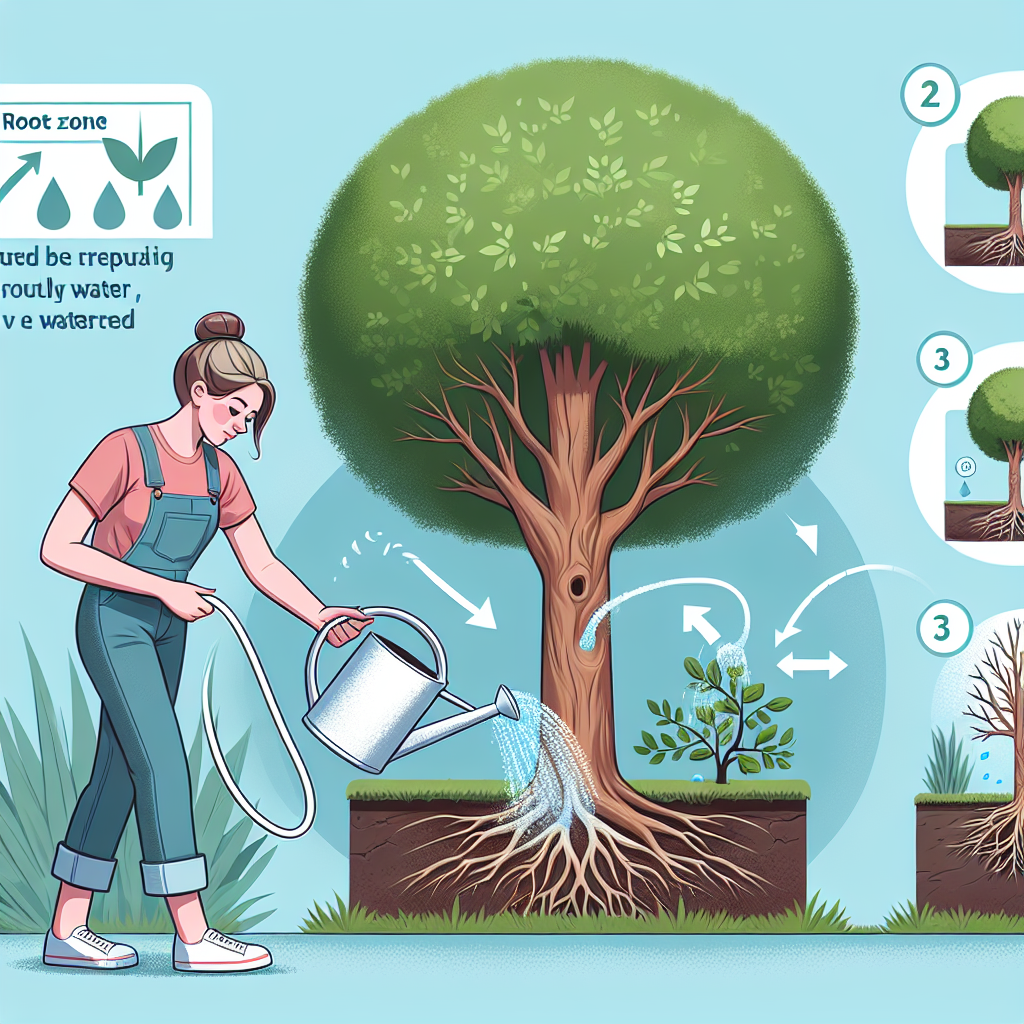
Other
How to water mature trees
# How to Water Mature Trees: A Comprehensive Guide When it comes to maintaining a lush and beautiful landscape, mature trees play a crucial role. However, with age, their watering needs can change quite significantly. In this article, we will explore the best practices for *how to water mature trees*, ensuring their health and longevity for years to come. ## Understanding the Water Needs of Mature Trees Mature trees have different water needs compared to younger ones. Over time, trees develop deep root systems, which allows them to access water from deeper soil layers. However, several factors influence their water requirements: - **Species of the tree**: Different species have different tolerance levels for drought and varying root depth. - **Soil type**: Sandy soil drains quickly, while clay retains moisture longer, impacting how often trees need watering. - **Weather conditions**: Hot, dry, or windy conditions increase the need for supplemental watering. - **Seasonal changes**: Seasonal rainfall and temperatures can alter the watering frequency. Understanding these factors will help you cater to the specific needs of your trees. ## When to Water Mature Trees Watering at the right time is crucial for effective hydration. Here are some guidelines: ### Observe the Conditions - **Seasonal awareness**: During the growing season (spring and summer), trees typically require more water. In contrast, during fall and winter, their water needs decrease. - **Drought conditions**: If you notice wilting leaves, dry soil, or browning at the tips, it might be time to water. ### Best Times to Water - **Early morning**: This is the best time to water trees as evaporation rates are lower. - **Late afternoon**: Another suitable time, but be cautious of watering too late in the day, which can lead to fungal issues. ## How Much Water Do Mature Trees Need? Determining the appropriate amount of water for mature trees can sometimes be challenging. Here's a breakdown: - **General Guidelines**: An established tree may require about 10 gallons of water per inch of trunk diameter each week during dry spells. - **Measurement**: It often helps to measure the diameter of the tree 4.5 feet above the ground (DBH - Diameter at Breast Height) to assess its water requirements. ## Methods of Watering Mature Trees Once you understand your tree’s needs and the optimal watering times, it’s time to look at the various methods: ### 1. Deep Soaking This technique ensures that water penetrates deeply to where the roots are located. Here’s how to do it: - **Use a soaker hose**: Lay the hose around the tree, ensuring it reaches the drip line. Allow it to run for a few hours. - **Drill holes**: In extreme cases, consider drilling holes around the root zone and filling them with water. ### 2. Drip Irrigation Drip irrigation systems can be a highly efficient method for watering mature trees: - **Advantages**: Reduces water waste and targets the root zone directly. - **Installation**: Professional installation may be advisable for extensive landscapes. ### 3. Manual Watering Sometimes, a simple garden hose is all you need. Here’s how to effectively manually water: - **Position the hose**: Place it near the base, allowing water to soak into the soil evenly. - **Let it run**: Water slowly for a long time to ensure saturation. ## Signs of Over-Watering or Under-Watering It’s equally important to recognize the signs of improper watering practices. Here are some symptoms to watch out for: ### Under-Watering Symptoms - **Brittle leaves**: Leaves that are crispy or dry can indicate a lack of water. - **Wilting**: Wilting foliage can be an alarming sign that the tree is stressed. - **Bark splitting**: If the bark is cracking or splitting, it could be due to inadequate moisture. ### Over-Watering Symptoms - **Yellowing leaves**: Chlorosis, or yellowing leaves, often points to excessive watering. - **Mushrooms and fungus**: The presence of mushrooms at the base of the tree can indicate over-saturation. - **Swollen roots**: Roots may rot, resulting in sunlight exposure causing the outer layer to swell. ### Tips for Testing Soil Moisture - **Soil probing**: Use a long screwdriver to probe the soil around the root zone. If it goes in easily, the soil may be moist enough. - **Soil moisture meter**: Consider investing in a moisture meter for accurate readings. ## Seasonal Care for Mature Trees ### Winter Preparation As winter approaches, mature trees may need special care: - **Mulching**: Add a layer of mulch around the tree base to retain moisture and temperature. - **Water before freeze**: Ensure trees are well-watered before the ground freezes. ### Spring and Summer During the growing season, monitor trees closely and adjust watering frequency as needed. ### Fall As the growing season concludes, gradually reduce watering but maintain vigilance during dry spells. ## Special Considerations - **Newly transplanted trees**: Newly relocated trees need regular watering to establish their root systems. They require attention until they acclimate. - **Natural springs**: Some trees thrive near natural water sources. If you live near one, monitor how that influences your tree’s watering needs. ## Conclusion Caring for mature trees and understanding *how to water mature trees* effectively is crucial for their health and longevity. By carefully observing environmental conditions, employing suitable watering techniques, and recognizing signs of distress, you can ensure your trees remain a vibrant part of your landscape for generations. Remember, the heart of nurturing wonderful trees lies in your attentive care and a deep understanding of their unique hydration needs. By following the practices outlined in this guide, you'll keep your mature trees thriving, contributing to a healthy ecosystem and an eye-catching landscape in your home or garden.By Guest, Published on October 20th, 2024